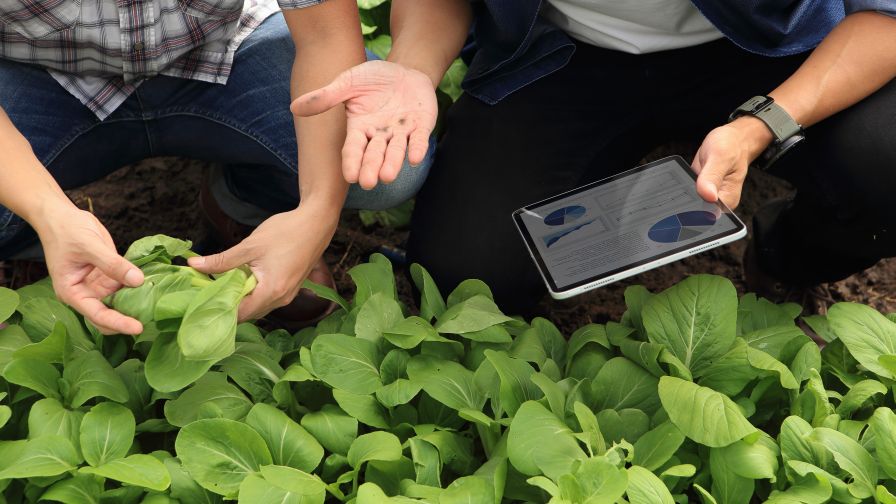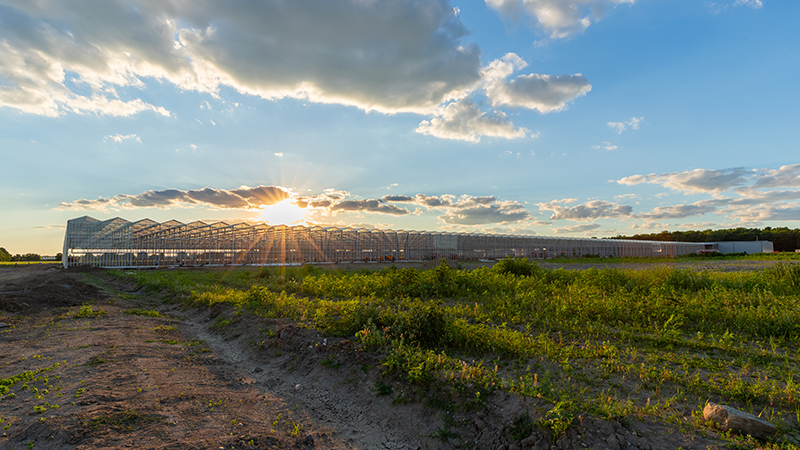Adopting Technologies in the Greenhouse to Develop Business Resilience

Photo: AdobeStock image
Adopting new technologies enables greenhouse growers to develop business resilience when dealing with a host of issues. These include supply chain problems, cost tracking, workforce management, and improving efficiencies across the production process. With technology, owners can withstand these challenges as their businesses grow by reducing manual tasks and consolidating data so it can be mined for insights into business performance.
In this article, we present technologies greenhouses can consider to run their businesses more efficiently. We also discuss the key to generating the full value that new technologies provide so owners can optimize the return on their investment.
Complementing Nurturing and Knowledge with Technology
Perhaps more so than any other type of business, greenhouse growers rely on the human touch. It takes careful nurturing to turn seeds or cuttings into vibrant flowers, plants, and trees. Running a greenhouse also requires specialized expertise in plant genetics, the weather, pest management, soil composition, and fertilization.
Yet, that human touch and that expertise also needs technology to succeed from a business perspective. Having a green thumb and knowing how to grow beautiful flowers and trees is step one. It’s just as important to create an operational foundation to scale production, fulfill market needs, and turn a profit.
That’s why the next generation of growers is turning to technology to complement nurturing and knowledge. This includes enterprise software solutions — such as Enterprise Resource Planning (ERP) and Customer Relationship Management (CRM) — that automate marketing, sales, production, and accounting processes.
Today’s growers also rely on productivity tools that allow their employees to work more efficiently, such as the Microsoft 365 suite that includes Office, Teams, and SharePoint applications. These tools enable users to communicate and collaborate in real time and share files from a centralized repository in the cloud, where everyone can access them instantly at any time, wherever they work.
Robots Working Alongside People
Other key technologies include mobility, which allows field workers and those in greenhouses and warehouses to use handheld devices connected to back-office systems. They can scan greenery and other items and enter transactions on the run. This helps everyone know production, inventory, and order status in real time.
Then there are the environmental controls that help growers contend with climate change and unpredictable weather. These controls can be managed with artificial intelligence to automatically adjust temperature, humidity, lighting, water, and fertilizer to accelerate growth cycles and produce brilliant flowers and plants.
Another key challenge that technology helps solve is the ongoing labor shortage. Advanced robots combine machine learning with GPS capabilities to take care of menial tasks, allowing workers to focus on higher-value tasks that can improve product quality. For instance, growers can deploy driverless tractors as well as robots that till soil and sow weeds. Robots can even identify and remove weeds without damaging plants and operate alongside people to increase their daily outputs.
Appealing to the Next-Generation Workforce
Today’s next generation of growers is embracing these new technologies. As the younger generations step in to lead their businesses, they want to incorporate technology to take ownership in their own way. They realize technology holds the key to scaling operations and building resiliency against competitive markets.
This new generation also knows how today’s labor pool values working for businesses that leverage technology. Prospective employees want to work for businesses that provide the tools that remove the stress of manual processes and allow them to be more productive in meeting their job responsibilities.
Maximizing the Value of New Technologies
The value that each new technology can deliver on its own generates a significant return on investment. However, that value increases exponentially when managing technologies effectively and connecting them together to share all the data they collect. Managers can run real-time reports that provide insights into how well the business is running.
For example, Internet of Things (IoT) devices connected to environmental controls can feed into ERP systems to help greenhouse growers analyze why production costs spiked in a particular month or quarter. Likewise, ERP systems connected to CRM systems allow the management team to proactively compare projected sales to production forecasts so they can adjust if the numbers don’t match.
The ERP platform essentially serves as a centralized knowledge base for collecting data from various sources, such as production consumption, output, and product movement. The ability to bring all this data together helps managers better understand workforce efficiency and the impact of greenhouse environment changes on production output. Additionally, these metrics help drive cost revaluations and the disbursement of ancillary costs across various flower, plant, shrub, and tree lots.
Identifying the Right Technologies to Deploy
There is no one-size-fits-all approach to technology adoption. A technology stack that suits one operation might not make sense for another grower. Also consider that change can be hard. Some people may be stuck in the old ways of doing things and resist adopting new technologies.
To take on these challenges, it helps to collaborate with a technology partner. Deploying new technology can be expensive and requires a big commitment from the internal team. Working with a partner helps identify which new technologies to deploy and facilitates the change management process.
The specialized knowledge a partner brings to the table, especially one that focuses on the horticulture industry, minimizes the risk of a project taking too long to complete or not meeting expectations. A partner can also offload much of the burden on the internal staff. Because they know the best practices to leverage as well as the pitfalls to avoid, they can accelerate the deployment.
The end result is well worth the effort. Assimilating data from hundreds of sensors and tracking workforce performance through hand-held devices provides a 360° view of what’s going on with the business. Knowing what’s on hand for inventory and the capacity of the workforce to get orders out the door makes it possible to consistently meet customer demands and keep growing the business.
If you have questions about adopting technologies for your greenhouse operations or want to learn more about collaborating with Velosio, contact Sara Silver at [email protected] or visit the Velosio website. Velosio works with greenhouse growers to adopt technologies and find ways to streamline processes to accelerate the growth of their operations.









